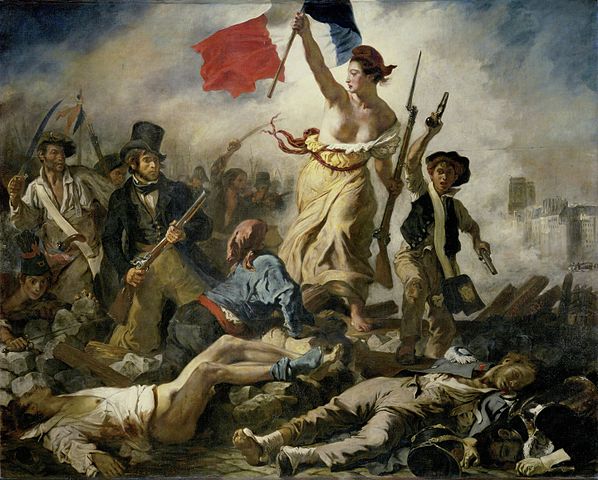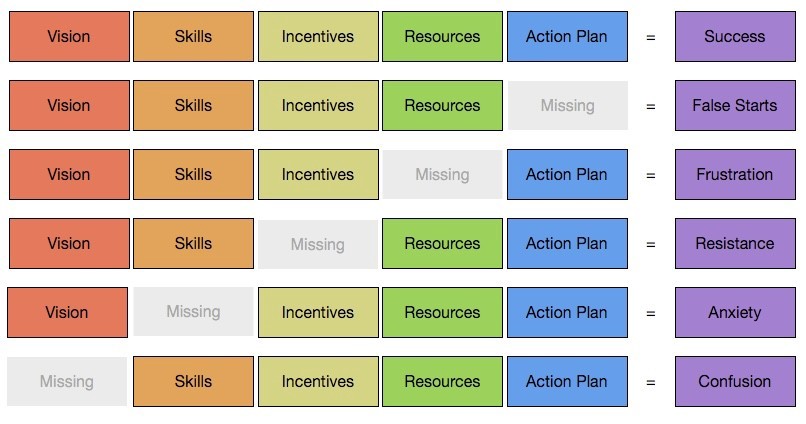Willem Hoek
Knoster Model for Managing Change
Jan 07, 2020

Eugene Delacroix, Liberty Leading the People, 1830
Change is the law of life. And those who look only to the past or present are certain to miss the future.
John F. Kennedy
The Knoster Model is a handy framework for thinking about change. This change model was adapted from T Knoster, Presentation to TASH Conference, Washington DC, 1991. [1]
There are five components required that will leads to successfull change. Although some articles include a sixth one: Consensus
Vision + Skills + Incentives + Resources + Action Plan => CHANGE
Comment: I have been unable to locate the original presentation by Knoster. If you can find it, please send it on to me.
How to use it: Are you experiencing any of the following emotions in your projects, job or life in general: False Starts (Treadmill), Frustration, Resistance, Anxiety, Sabotage or Confusion. Use the model below to see what might be missing.

Some questions to ask :
| To avoid | Ask these type of questions | |
|---|---|---|
| Vision | Confusion | Why are we making this change? What will the future looks like? |
| Consensus | Sabotage | Do we all agree to do this? |
| Skills | Anxiety | Do we have the know-how to pull it off? |
| Incentives | Resistance | What are the pay-off? |
| Resources | Frustration | Do we have the time, money and people available to to do this? |
| Action Plan | False start | What are the steps to follow? Who will do what? |
Reference
[1] T Knoster, Presentation to TASH Conference, Washington DC, 1991.
Similar Posts on this website
How-to Import an Excel file into SQLite and back to Excel again
Solving the Jane Street puzzle of December 2022
Why I created Scrumdog - a program to download Jira Issues to a local database
Jane Street puzzle Feb 2021 SOLVED! OCaml to the rescue
Solving the Jane Street puzzle of Dec 2020 - Backtracking with OCaml
Automate your Jira reporting with Python and Excel